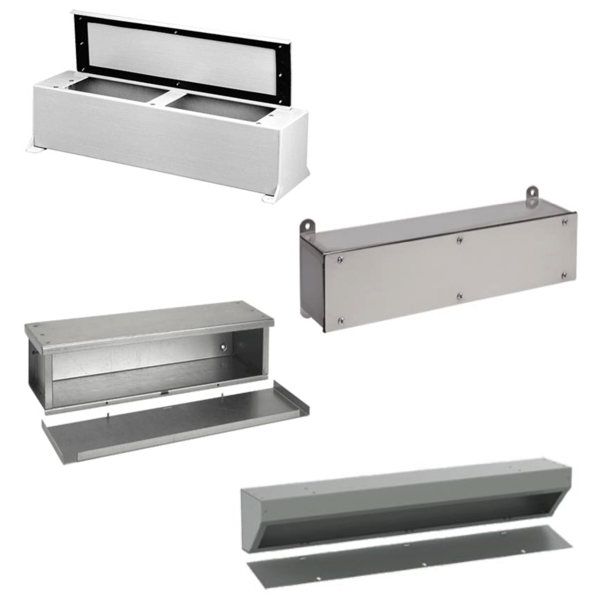Wiring Troughs

Wiring troughs provide an efficient and organized solution for routing, protecting, and managing electrical wiring in control panels, industrial equipment, and commercial installations. Designed to house multiple conductors and cables, wiring troughs help reduce clutter, simplify maintenance, and support safe electrical layouts in a wide range of applications.
RSP Supply offers wiring troughs in multiple lengths, NEMA ratings, and material options to meet different environmental and regulatory requirements. Available materials include fiberglass for corrosion resistance, galvanized steel for cost-effective durability, and stainless steel for demanding washdown or corrosive environments. These options allow installers to select the appropriate enclosure based on exposure to moisture, chemicals, or outdoor conditions.
Commonly used in manufacturing facilities, utilities, and infrastructure projects, wiring troughs from trusted manufacturers such as Hoffman and Schneider Electric are built for long-term reliability. With configurations suitable for both indoor and outdoor use, these enclosures support clean cable routing while maintaining compliance with applicable electrical and safety standards.
FAQs
Q: What is a wiring trough used for?
A wiring trough is used to route, protect, and organize electrical cables and conductors, typically outside of control panels or between electrical enclosures.
Q: What materials are wiring troughs available in?
Wiring troughs are commonly available in fiberglass, galvanized steel, and stainless steel. Each material offers different benefits depending on corrosion resistance, strength, and environmental exposure.
Q: What NEMA ratings are available for wiring troughs?
Wiring troughs are available in various NEMA ratings to support indoor, outdoor, and industrial environments, including protection against dust, water, and corrosion.
Q: Are wiring troughs suitable for outdoor installations?
Yes. Wiring troughs with appropriate NEMA ratings and materials, such as fiberglass or stainless steel, are designed for outdoor and harsh-environment installations.
Q: Can wiring troughs be cut or customized for installation?
Many wiring troughs can be cut to length or configured with fittings and covers to accommodate specific installation requirements, depending on the manufacturer’s guidelines.
Why Buy Wiring Trough from RSP Supply
RSP Supply provides a broad selection of wiring troughs in multiple sizes, materials, and NEMA ratings from trusted manufacturers such as Hoffman and Schneider Electric. Our offerings support organized cable management across industrial, commercial, and outdoor applications. Customers rely on RSP Supply for dependable enclosure solutions, knowledgeable technical support, and products designed to meet real-world electrical installation needs.

